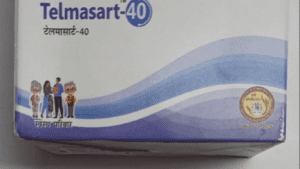Tooth pain is a universal misery—sharp, throbbing, and often unbearable. It’s no surprise that people desperately search for ways to kill tooth pain nerve in 3 seconds permanently. The promise of instant, lasting relief sounds like a dream come true when you’re clutching your jaw at 2 a.m., praying for the ache to stop. But is this bold claim a reality or just wishful thinking? In this in-depth guide, we’ll explore the causes of tooth nerve pain, debunk myths, and provide practical solutions—both at-home remedies and professional treatments—to help you find relief. Whether you’re seeking a quick fix or a permanent solution, we’ve got you covered. Let’s dive into the science, the options, and the truth behind killing tooth nerve pain.
What Causes Tooth Nerve Pain? Understanding the Basics
Before we explore how to kill tooth pain nerve in 3 seconds permanently, it’s crucial to understand why your tooth hurts in the first place. Tooth pain often originates from the nerve-rich pulp—the soft core inside your tooth. This pulp houses nerves, blood vessels, and connective tissue, making it highly sensitive to irritation. When something disrupts this delicate system, you feel it. Here are the most common culprits:
- Cavities: Tooth decay that burrows through enamel and dentin, reaching the nerve.
- Cracked or Chipped Teeth: Fractures that expose the pulp to bacteria or temperature changes.
- Gum Disease: Receding gums or infection that irritates the tooth root.
- Dental Trauma: A blow to the mouth that damages the nerve.
- Abscesses: Pockets of pus from infection, putting pressure on the nerve.
The nerve’s role is to alert you to danger—like decay or injury—by sending pain signals to your brain. When people talk about “killing” the nerve, they mean stopping these signals for good. But can that really happen in three seconds? Let’s investigate.
Can You Really Kill a Tooth Pain Nerve in 3 Seconds?
The idea of killing tooth pain nerve in 3 seconds permanently is tantalizing, but let’s be honest—it’s more hype than science. Here’s why this claim doesn’t hold up:
- Nerve Death Isn’t Instant: “Killing” a nerve means stopping its ability to transmit pain, which requires either removing it (via a root canal) or severing its function. These are complex processes that take time—far more than three seconds.
- Home Methods Are Temporary: Remedies like clove oil or ice can numb pain fast, but they don’t destroy the nerve or fix the underlying issue. The relief fades, and the pain returns.
- Safety Concerns: Trying to “kill” a nerve at home with makeshift tools or chemicals is a recipe for disaster—think infections, tissue damage, or worse.
Top-ranking sites often highlight this disconnect between expectation and reality. While you can’t permanently eliminate tooth nerve pain in three seconds, you can achieve quick relief and pursue lasting solutions. Let’s break it down into two categories: immediate relief and permanent fixes.
Home Remedies for Fast Tooth Pain Relief
When tooth pain strikes, you want relief now. These home remedies can ease the ache in seconds to minutes, buying you time until you can see a dentist. They won’t kill tooth pain nerve in 3 seconds permanently, but they’re safe, accessible, and effective for temporary comfort.
1. Clove Oil: Nature’s Numbing Agent
- How It Works: Clove oil contains eugenol, a natural anesthetic and antiseptic that numbs the nerve and fights inflammation.
- How to Use: Dip a cotton ball in a few drops of clove oil (diluted with a carrier oil like olive oil if pure), and press it against the painful tooth for 10–15 seconds.
- Results: Pain dulls within a minute.
- Caution: Avoid overuse—it can irritate gums or cause a burning sensation.
2. Saltwater Rinse: Simple and Soothing
- How It Works: Salt reduces swelling and cleanses the mouth, easing nerve irritation.
- How to Use: Dissolve 1 teaspoon of salt in a glass of warm water. Swish for 30 seconds, then spit.
- Results: Relief starts in under a minute as inflammation decreases.
- Bonus: It’s a great first step for abscess-related pain.
3. Cold Compress: Chill the Pain Away
- How It Works: Cold constricts blood vessels, reducing swelling and numbing the area.
- How to Use: Wrap ice in a cloth or use a cold pack. Hold it against your cheek near the painful tooth for 15–20 minutes.
- Results: Pain lessens within seconds, especially for swelling or trauma.
- Tip: Alternate with warm compresses if the cold feels too intense.
4. Garlic: A Surprising Painkiller
- How It Works: Garlic has allicin, an antimicrobial compound that can reduce infection and pain.
- How to Use: Crush a garlic clove, mix with a pinch of salt, and apply the paste to the tooth for 10–20 seconds. Rinse after a few minutes.
- Results: Pain eases as inflammation drops.
- Downside: The taste isn’t for everyone!
5. Peppermint Tea Bags: Cooling Comfort
- How It Works: Menthol in peppermint numbs the area and soothes irritation.
- How to Use: Steep a peppermint tea bag, cool it slightly, and hold it against the tooth for 20–30 seconds.
- Results: A cooling sensation kicks in fast.
These remedies align with advice from top sites—they’re quick, practical, and widely recommended. However, they’re not permanent. For that, you’ll need professional intervention.
Professional Treatments to Permanently Kill Tooth Nerve Pain
If you’re serious about killing tooth pain nerve permanently, a dentist is your best ally. Here are the two proven methods to stop nerve pain for good:
1. Root Canal Therapy: The Gold Standard
- What It Is: A procedure where the dentist removes the infected or inflamed pulp, cleans the tooth’s canals, and seals it with a filling or crown.
- How It Works: By extracting the nerve, the pain signal stops permanently. The tooth remains functional but “dead” (no longer sensitive).
- Process: Takes 30–90 minutes, depending on complexity. Local anesthesia ensures you feel nothing during the procedure.
- Recovery: Mild soreness for a few days, but pain relief is immediate post-treatment.
- Why It’s Popular: Preserves the tooth while ending the agony. Studies show a 95% success rate when done by a skilled dentist.
2. Tooth Extraction: The Last Resort
- What It Is: Complete removal of the tooth, nerve and all.
- How It Works: No nerve, no pain—simple as that.
- Process: Done under local anesthesia in 20–40 minutes. Healing takes 1–2 weeks.
- When It’s Needed: Severe decay, irreparable damage, or if a root canal isn’t viable.
- Trade-Off: You lose the tooth, but the pain is gone forever.
Both treatments “kill” the nerve permanently, but they’re far from a 3-second fix. They’re safe, effective, and backed by dental science—unlike risky DIY attempts.
Over-the-Counter Solutions for Tooth Pain Relief
While waiting for a dental appointment, over-the-counter (OTC) options can bridge the gap:
- Ibuprofen (Advil): An anti-inflammatory that tackles pain and swelling. Take 200–400 mg every 4–6 hours, as needed.
- Acetaminophen (Tylenol): A pain reliever for those who can’t take ibuprofen. Follow dosage instructions (typically 500–1000 mg every 6 hours).
- Benzocaine Gels (Orajel): Topical numbing agents applied directly to the tooth. Relief lasts 20–60 minutes. Use sparingly to avoid side effects like methemoglobinemia (rare but serious).
These are temporary measures. If pain lingers beyond 48 hours or worsens, it’s time to see a professional.
Why “Killing” the Nerve at Home Isn’t Safe
Some online sources suggest extreme DIY methods—like using alcohol, vinegar, or even sharp objects—to kill tooth pain nerve in 3 seconds permanently. This is dangerous advice. Here’s why:
- Infection Risk: Open wounds or chemical burns invite bacteria, leading to abscesses or systemic infection.
- Tissue Damage: Harsh substances can harm gums, enamel, or nearby nerves.
- No Precision: You can’t target the nerve without dental tools and training.
Top sites universally warn against these tactics. Stick to safe remedies and professional care.
Preventing Tooth Nerve Pain: Long-Term Strategies
Once you’ve dealt with tooth pain, you’ll want to avoid a repeat. Prevention is key to keeping your nerves intact:
- Brush Twice Daily: Use fluoride toothpaste to strengthen enamel and fight decay.
- Floss Daily: Removes plaque between teeth where brushes can’t reach.
- Limit Sugary Foods: Bacteria thrive on sugar, producing acid that erodes teeth.
- Wear a Mouthguard: Protects against grinding or sports injuries.
- Visit the Dentist: Checkups every 6 months catch problems early.
A healthy mouth means fewer emergencies—and less need to “kill” a nerve.
Common Myths About Killing Tooth Nerve Pain
Let’s bust some myths floating around the web:
- Myth: Rubbing alcohol kills the nerve instantly.
Truth: It might numb briefly but won’t destroy the nerve and risks burns. - Myth: Pain means the nerve is already dead.
Truth: Dead nerves don’t hurt; pain signals an active issue. - Myth: You can drill the nerve out yourself.
Truth: This is dangerous and ineffective without proper tools and sterilization.
FAQs About Killing Tooth Pain Nerve
Q: Can I kill a tooth nerve at home permanently?
A: No, only a dentist can safely and permanently remove or disable a nerve.
Q: How fast can relief happen with a root canal?
A: Pain often subsides within hours after the procedure, though it takes longer than 3 seconds to perform.
Q: Are home remedies enough?
A: They’re great for temporary relief but won’t fix the root cause.
Q: Does killing the nerve weaken the tooth?
A: A “dead” tooth may become brittle over time, but a crown can reinforce it.
Conclusion: Finding Real Relief from Tooth Nerve Pain
The quest to kill tooth pain nerve in 3 seconds permanently reflects a universal desire for fast, lasting relief. While three seconds isn’t realistic for a permanent fix, you can ease pain quickly with home remedies like clove oil or a cold compress. For a true end to the agony, professional treatments like root canals or extractions are your best options. Don’t fall for risky DIY myths—your teeth deserve better. If tooth pain is disrupting your life, try these safe solutions and book a dental visit. Relief is within reach, even if it takes a little longer than three seconds.




